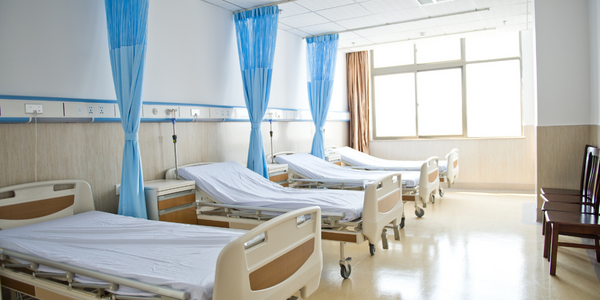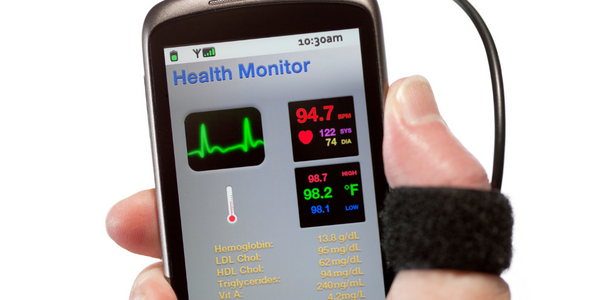Customer Company Size
Large Corporate
Region
- America
Country
- United States
Product
- NetMotion Mobility
- Lenovo laptops and tablets
- Sierra Wireless AirCards
- Cerner RoadNotes
Tech Stack
- Mobile Performance Management software
- Electronic Medical Records
Implementation Scale
- Enterprise-wide Deployment
Impact Metrics
- Productivity Improvements
- Customer Satisfaction
- Employee Satisfaction
Technology Category
- Functional Applications - Remote Monitoring & Control Systems
Applicable Industries
- Healthcare & Hospitals
Applicable Functions
- Field Services
- Quality Assurance
Use Cases
- Remote Asset Management
- Remote Collaboration
Services
- System Integration
About The Customer
Allina Hospitals and Clinics is a healthcare system that includes 11 hospitals, four ambulatory care centers, 97 clinics and a home-care division. The home care division is a new and thriving unit at Allina. More than 300 nurses serve the group’s patient population throughout Minnesota and Wisconsin. The Allina home care and hospice nurse team carries a range of laptops and devices from Lenovo (X60 series to X200 series). The laptops use Sierra Wireless AirCards to connect to cellular networks from Verizon and Sprint. Cerner RoadNotes, a point-of-care online document system for home care, allows nurses to review patient medical history, update care plans, enter new diagnoses and complete EMR documentation.
The Challenge
Allina Hospitals and Clinics were among the first in the nation to use Electronic Medical Records to deliver seamless, coordinated care. However, the group’s home nurses were regularly losing connectivity in the field. Logged out of applications without warning, the nurses were forced to log in again and re-enter the data lost from their previous session. When the IT group tied 90 helpdesk tickets to this issue, management stepped in to find a better solution. The EMR application requires field devices to sync with the central database. But as the scale of data transfer grew, nurses could no longer wait until the end of their shifts to sync from an office or at home – synchronization sessions were taking as long as a half-hour. The problem was so bad that several nurses quit in frustration.
The Solution
Allina implemented NetMotion Mobility® Mobile Performance Management software to keep nurses connected throughout the day. Allina started with a small pilot to test Mobility with 25 of the nurses who experienced the most issues. When their communications issues went away, Allina decided to deploy Mobility to its entire home care team. Mobility made it easy for nurses to access Wi-Fi at home or on the go using the secure connection. Mobility’s analytics capabilities helped Daisley and his team to identify and resolve potential problems before they can impact the quality of care. Allina has also been able to expand their home care group and give others in the organization reliable enhanced field performance.
Operational Impact
Quantitative Benefit

Case Study missing?
Start adding your own!
Register with your work email and create a new case study profile for your business.
Related Case Studies.

Case Study
Hospital Inventory Management
The hospital supply chain team is responsible for ensuring that the right medical supplies are readily available to clinicians when and where needed, and to do so in the most efficient manner possible. However, many of the systems and processes in use at the cancer center for supply chain management were not best suited to support these goals. Barcoding technology, a commonly used method for inventory management of medical supplies, is labor intensive, time consuming, does not provide real-time visibility into inventory levels and can be prone to error. Consequently, the lack of accurate and real-time visibility into inventory levels across multiple supply rooms in multiple hospital facilities creates additional inefficiency in the system causing over-ordering, hoarding, and wasted supplies. Other sources of waste and cost were also identified as candidates for improvement. Existing systems and processes did not provide adequate security for high-cost inventory within the hospital, which was another driver of cost. A lack of visibility into expiration dates for supplies resulted in supplies being wasted due to past expiry dates. Storage of supplies was also a key consideration given the location of the cancer center’s facilities in a dense urban setting, where space is always at a premium. In order to address the challenges outlined above, the hospital sought a solution that would provide real-time inventory information with high levels of accuracy, reduce the level of manual effort required and enable data driven decision making to ensure that the right supplies were readily available to clinicians in the right location at the right time.

Case Study
Gas Pipeline Monitoring System for Hospitals
This system integrator focuses on providing centralized gas pipeline monitoring systems for hospitals. The service they provide makes it possible for hospitals to reduce both maintenance and labor costs. Since hospitals may not have an existing network suitable for this type of system, GPRS communication provides an easy and ready-to-use solution for remote, distributed monitoring systems System Requirements - GPRS communication - Seamless connection with SCADA software - Simple, front-end control capability - Expandable I/O channels - Combine AI, DI, and DO channels

Case Study
Driving Digital Transformations for Vitro Diagnostic Medical Devices
Diagnostic devices play a vital role in helping to improve healthcare delivery. In fact, an estimated 60 percent of the world’s medical decisions are made with support from in vitrodiagnostics (IVD) solutions, such as those provided by Roche Diagnostics, an industry leader. As the demand for medical diagnostic services grows rapidly in hospitals and clinics across China, so does the market for IVD solutions. In addition, the typically high cost of these diagnostic devices means that comprehensive post-sales services are needed. Wanteed to improve three portions of thr IVD:1. Remotely monitor and manage IVD devices as fixed assets.2. Optimizing device availability with predictive maintenance.3. Recommending the best IVD solution for a customer’s needs.

Case Study
HaemoCloud Global Blood Management System
1) Deliver a connected digital product system to protect and increase the differentiated value of Haemonetics blood and plasma solutions. 2) Improve patient outcomes by increasing the efficiency of blood supply flows. 3) Navigate and satisfy a complex web of global regulatory compliance requirements. 4) Reduce costly and labor-intensive maintenance procedures.

Case Study
Cloud-based healthcare solution for Royal Philips
Royal Philips wanted to launch its cloud-based healthcare solution HealthSuite Digital Platform in China to deliver services to help cope with challenges related to urbanization and population growth. Philips wanted to achieve this goal by combining mobile, cloud computing and big data technologies. To bring this platform and product to market, Philips required cloud computing and local technical service capabilities in China, in addition to a flexible IT infrastructure that could handle user requests.








